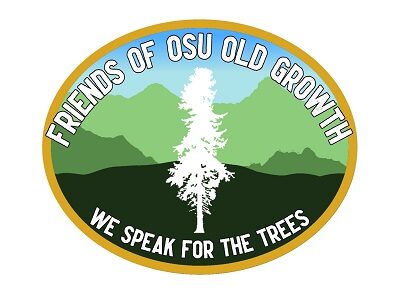Note: This informative essay, written by Joshua Smith, weaves together forestry, wildfires, old-growth forests, and climate change in an eloquent and compelling way. Joshua is a self-taught eco-forester and leader of the permaculture movement who has been working with organic and sustainable practices for 50 years. He has designed, and installed nature-mimicking, agro-ecological systems throughout the western U.S. His book, Botanical Treasures: Multi-use Plants for Renewable Resources and a Nature-based Economy, is a practical guide covering a wide variety of trees and plants. Joshua lives in Eugene, Oregon, where he is still doing permaculture and landscape design work.
—————————————————————————————————————————
As catastrophic wildfires rage throughout the West, many are asking why they are happening and what can be done to prevent them. These are important questions and the answers are much more complicated than we might imagine. History in the form of ideological doctrines, politics, and an anthropocentric economic system are intimately involved in today’s devastating wildfires.
With the Arctic heating up at more than twice the rate of the rest of the world, clearcutting the Tongass rainforest would promote desertification and increase the rate of global warming for the rest of the planet. Am I wrong? The U. S. Forest Service seems to think so. Their environmental impact statement for Trump’s opening of the Tongass to logging tells us the impact will be negligible.
Our founding fathers believed in “domination over Nature”: a kind of Manifest Destiny for Nature. Clearing the Earth of trees was a sign of progress. Our second president, John Adams, whose signature is on the Declaration of Independence, once proudly exclaimed:
“My family, I believe, cut down more trees in America than any other name.”
Ninety-five percent of the virgin forests that existed in the lower forty-eight states from coast to coast at Adam’s time have now been cut down. About 80% of these forests have grown back, but they are often quite different from those they replaced. We call these “second growth” forests, but in fact they are often logged repeatedly over time.
As a result of the logging industry’s propensity to cut down every old growth tree they can, almost every forest ecosystem throughout the land has been clearcut. Immediately following a clearcut, the local weather changes, becoming hotter in summer, colder in winter, and the land dries out. As global warming increases global temperatures, it also further increases the drying. Old growth forest ecosystems create rain by increasing relative humidity which both attracts and produces clouds as the trees transpire. A forest cools the air above the treetops creating descending air currents that result in falling rain. Cut these forests down and annual precipitation declines significantly. It is well known that many of the world’s arid lands of today were once forested; after the trees were cut, aridity followed.
Forest giants of old also increased the humidity near the ground, so the understory was much moister. As a result, fires – when they did occur – were cooler and burned slower, doing little if any damage to the old trees. Today, however, there is another way global warming is drying out our forests. Increasing temperatures are changing the snowpack. More and more rain is replacing snow. Whereas snow melts slowly, releasing its moisture into the ground over long periods of time, rain runs off quickly, increasing the likelihood of floods and mudslides, while denying the forests the moisture needed for the summer months.
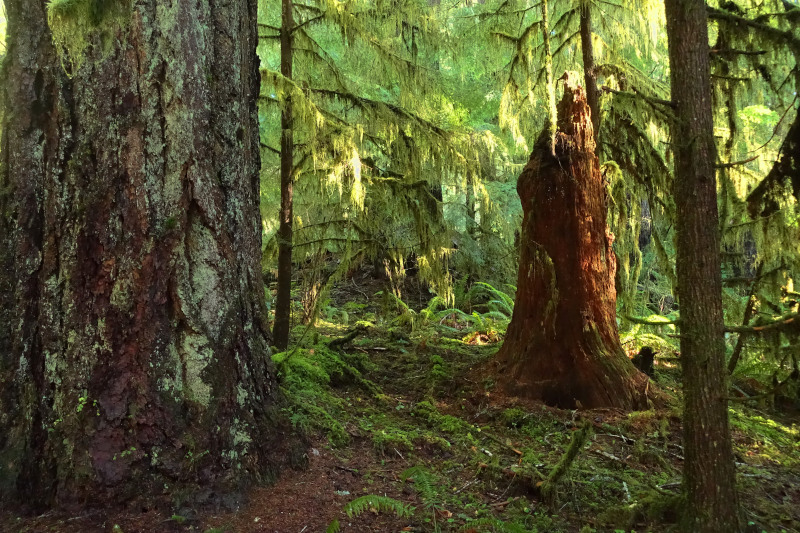
In most old growth forests there are openings between the canopies of the tallest trees that allow sunlight to reach the forest floor. This permits the seeds of trees and understory shrubs and herbs to germinate. Following a clearcut, the whole area is suddenly flooded with sunlight and millions of seeds near the soil surface begin to germinate. A new generation of forest plants is sprouting, often just inches apart from one another. Where the virgin forest might have had just 10 to 50 giants per acre, following the clearcut you get anywhere from 150-3000 young trees per acre, all competing fiercely for finite resources including water. Along the way, the losers in this competition begin to die off, and those that are shade intolerant also begin to die as the fastest growing trees shade them out. The result is a buildup of fuel to feed severe fire events. The trees that survive to make up the canopy are still crowded and soon close the canopy so that almost no light reaches the understory and the lower branches start to die, eventually adding more fuel to the forest floor. These canopy trees are still far from mature. The evergreen conifers that are dominant, particularly in our Western forests, are known as pyrophytes, meaning they are very flammable due to their oils and resins. When young they are highly vulnerable to fire; as they start to approach maturity, however, they become increasingly resistant to fire. One reason for this is their bark’s increasing thickness with age. Another reason is that with time their lower branches die in heavy shade and eventually fall off. As a result, the lowest branches in an older forest will be high off the ground where ground fires and ladder fuels cannot reach.
Our Western Conifers tend to be long-lived and at maturity are magically monstrous in size and wonder. Ponderosa Pine has a large natural range in the West, and they can live 400 to 500 years and can attain heights of 230 feet. Douglas Fir has an even greater range than Ponderosa and can live around a thousand years, growing up to 325 feet tall. The Coast Redwood, considered the tallest tree in the world – certainly in the temperate zones of the Northern Hemisphere – can reach 360 feet into the sky and live up to two thousand years. These extraordinary giants have inhabited a very small region in the coastal mountains from Northern California to Southern Oregon. The old growth Redwoods are almost all gone today – though they often coppice, meaning that they stump sprout. According to the U. S. Forest Service, only 7% of our forests have trees over 100 years old today. The timber barons would salivate if turned loose in a hundred-year-old forest. Today they cut them down when they average 40 years of age.
It’s worth saying, at this point, that not only do trees become more fire resistant as they age; they also sequester more carbon and become more adaptable to drought. Our whole approach to forestry needs re-evaluation, as does the building industry. Both are wasteful. We need to steward our forests and their resources more wisely – and with each passing day this is becoming increasingly critical.
As we have seen so far, there are various ways our lifestyles are drying out forests, but there is yet another culprit. Second growth forests typically have an even canopy top because the trees are all the same age. Even-age canopies are associated with increased drying. Since clearcuts are commonly replanted with the same species, often a selected variety; as a result there is little diversity and produce a particularly even canopy. These tree farms are more flammable than even second growth, and if they ignite, they will set the neighboring forest ablaze.
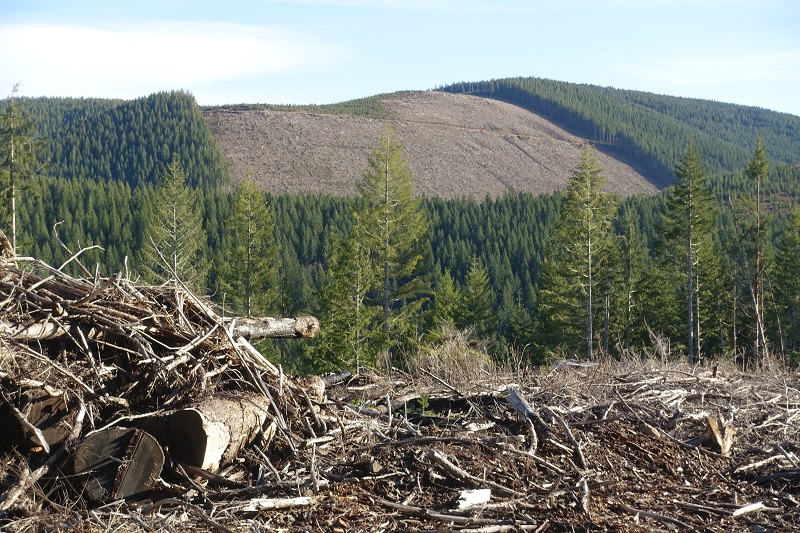
On the other hand, a functioning forest ecosystem is commonly made up of trees of different ages and different species. Their canopies are naturally irregular. Natural forests also have trees with various rates of growth, depending on the species. Some will have varying degrees of shade tolerance, while others will be shade intolerant. Forest ecosystems are very complex, yet are tremendously sustainable. But our treatment of these forests makes them largely vulnerable and dysfunctional.
It should be clear by now why we are experiencing massive forest fires today. However, there is sadly more to the story. Overcrowded young second growth conifers contribute to forest stress, especially when monocropped. These struggling trees attract insect pests and pathogens that can cause serious epidemics, often killing trees in large numbers, rendering them prime fuel for fire. In order to reduce the fuel load and stress, these forests need serious and thoughtful thinning of young trees.
In a healthy forest ecosystem, such native pests and pathogens attack the occasional unhealthy tree, hastening its demise. Once dead, such individuals are known as snags and they provide valuable habitat for a diversity of species in a vital forest ecosystem. About 2 to 4 snags per acre in a healthy forest are beneficial to the integrity of the ecosystem’s functions. Under severe distress, however, the forest’s immune system is compromised, epidemics rage, and whole forests can perish.
Another problem has to do with the ever-increasing number of people moving into forested areas. This seems connected to the growth of cities and towns around the country, which are expanding by about a million acres annually, and has created what’s known today as the urban/wildland interface. Few of these residents in or near the forest are particularly knowledgeable of the dangers. They build homes and businesses using highly flammable materials, on sites where wildfires are likely most severe; and they keep a lot of combustible materials around like gas cans, paint thinner, firewood, etc.
Today only about 10 to 15% of forest fires result from lightning. All the rest are caused by people. Although some are the result of arson, most are unintentional. The Paradise Fire was the result of a downed power line. Other causes might be sparks from a chainsaw, from a chimney without a spark arrestor, or a backfire from a car or truck, or from a campfire. The more people living in the urban/wildland interface, the greater the risk of catastrophic wildfire.
Some years back, the Sierra-Nevada Ecosystem Project’s report on the results of their research to Congress had this to say:
“Timber harvest, through its effects on forest structure, local microclimate, and fuel accumulation, has increased fire severity more than any other recent activity.”
What a conundrum! Especially with the timber industry so vital to our economy – or is it? It turns out that a healthy forest ecosystem left undisturbed has a great deal more economic value than the lumber it can provide. Forest ecosystems provide us with fresh air. An average sized conifer can supply enough oxygen to meet the needs of 18 people, while simultaneously helping to mitigate air pollution. The intact forest maintains our functional watersheds as well, delivering volumes of purified fresh water. They moderate climate extremes, lowering summer heat and warming the local climate in winter. They provide flood control, and with global warming lowland flooding will increase significantly. Forests also “eat the wind” as the late Bill Mollison – cofounder and emissary for Permaculture – was fond of saying. Meaning they are adept at significantly braking the wind’s velocity. They both control soil erosion (like mudslides) and create soil fertility. They provide habitat for wildlife and increase biodiversity. The forest yields an abundance of protein, which every living creature, us included, requires to physically exist. These are all critically valuable assets, rarely counted in our GDP!
Most important in this age of global warming: forests sequester carbon. Old growth forests without a doubt sequester far more carbon than young forests. One study by two ecologists at Oregon State found that Douglas firs don’t even begin to sequester CO2 in appreciable amounts until they’re around 200 years old. Cut down a forest and great amounts of carbon are released to the atmosphere and the trees that sequestered it are gone, no longer performing this service.
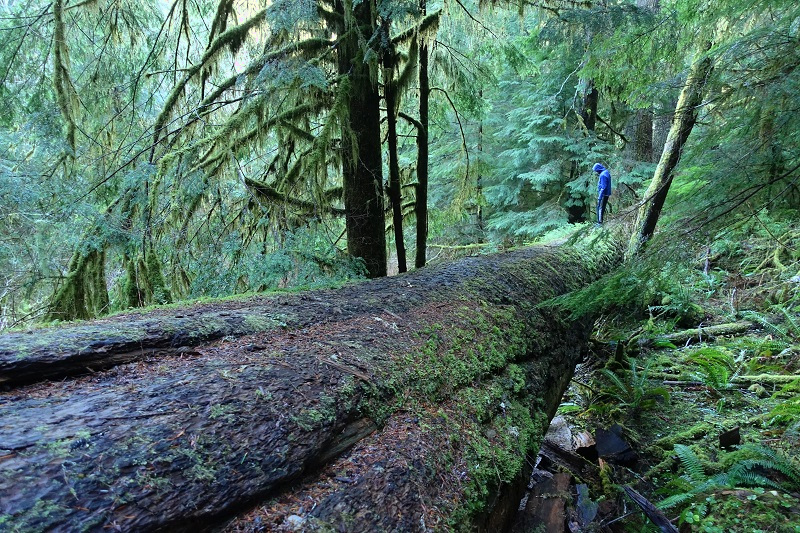
The California Department of Forestry placed the value of each tree in a 50-year-old second- growth forest, just for its ecological services, at $395,750. Compare that to the value of a single 500-year-old Coast Redwood about twenty stories tall, whose value for lumber is about $50,000. The contrast here is quite stark. What’s just as shocking is that the federal government subsidizes the logging industry with at least a quarter of a billion dollars every year. When we examine the policies of the U. S. Forest Service and the Bureau of Land management with their relationship to the timber industry, they seem to be a branch of that industry. Unfortunately, our state forest services follow the example of the Feds.
To be clear, there are many in the Forest Service doing valuable work; the problem is generally with the politically appointed leadership.
In his book, Reforming the Forest Service, Randal O’Toole writes:
“Recreation on Forests near Yellowstone National Park produces four times the income brought in by logging and grazing and provides 16 times as many jobs as timber production. Yet timber and grazing budgets on these forests are consistently four times greater than funds for recreation.“
Similarly, in the 1990s, 30 respected economists warned the President of the United States that human encroachment into forest ecosystems was a serious threat to the valuable economic goods and services that healthy ecosystems provide, which they concluded were “four times greater than the total value of their timber.”
An article in the March 1997 issue of National Geographic magazine went so far as to predict that in the twenty-first century recreation alone, in America’s forests, would become 28 times more valuable than harvesting their timber.
Another economic asset of intact forest ecosystems and their biodiversity, often left out of the equation, is the Special Forest Products (SFP) industry. These are many non-timber natural resources in the forest. They include edible gourmet plants and mushrooms, herbal medicines, raw materials for the international floral industry, and useful fibers. Fragrances are derived from the oils and resins of various parts of aromatic foliage; bark, seeds or roots can infuse soaps, shampoos and perfumes. Forests also yield seeds and cuttings for nursery plant propagation, materials for cosmetics, skin and health care products, and much more.
These SFPs are important for local economies. As far back as 1997 they were yielding over 200 million dollars in annual revenue, just in the Pacific Northwest. Demand continues to increase and is often greater than supply. In a healthy old growth forest, SFP alone can be of equal or greater value than its timber. Since many of these materials serve as components for value- added products, they provide additional jobs and encourage cottage industries. It’s important that they be included in a holistic ecosystem management plan.
While we’re at it we should mention polewood, small diameter trees that should be thinned to reduce the fuel load in the forest. Although the timber industry places no value on them, they have a variety of uses that include polewood outbuildings, rustic furniture, bird feeders and houses, fence posts, signposts, etc. With a little imagination and some craft skills, many interesting and useful articles can be made from polewood.
Today in the U.S., 20% of the original forest lands are entirely gone, replaced by cities, towns and farms. Of the remainder, 26% are so decimated that their ecosystem functions are severely eroded. And, as stated earlier, only 7% have trees as old as a hundred years. In this time of global warming, old growth forests are a critical component of our efforts to mitigate, or at least slow, the devastation of our planet. It is folly to cut down our oldest trees, masters of carbon capture, and replace them with seedlings.
In pre-Columbian times, when our North American forests were liberally stocked with colossal trees, the resident tribal nations, from the Eastern Seaboard to the Pacific Coast, employed fire as a forest management tool. Because the low-intensity, cool burns they practiced helped promote greater biodiversity, this practice improved their economy, offering a larger resource base for hunting and gathering. These low-intensity fires burned out much of the understory, which increased soil fertility and reduced competition – the opposite effect of a crown fire.
It’s important to note that cool burns do little damage to big trees, allowing them to live longer and sequester even more carbon. And it’s a relatively simple process that enhances the forests’ ecological functions and sustainability. Early Euro-American forest managers recognized the benefits of this tribal stewardship and adopted the practice, but in 1905 the U.S. Forest Service was founded, and one of its earliest acts was to outlaw the practice of low-intensity burns. In addition, they initiated a practice of putting out every forest fire as fast as possible. This is commonly referred to as “Smokey the Bear Syndrome” and is often blamed for today’s crown fires. Cutting fire out of the equation led to an ever-increasing fuel build-up and generated a fuel bomb just waiting for a spark. Although the Forest Service eventually learned this lesson, it still has to fight these big fires because of past practices. They burn so intensely hot and fast that they utterly destroy massive acreage of forest and have become increasingly difficult (or impossible) to control at all. Nor can they just start practicing low-intensity burns; with all that fuel currently in the forests, the fire would quickly burn out of control.
We now know that the timber industry must share blame with the Forest Service for today’s intense and massive wildfires. Towards the end of President Trump’s term in office, he ordered the Secretary of Agriculture, who oversees the U.S. Forest Service, to open the Tongass National Forest to logging, mining and oil extraction. Trump’s orders included road construction in over half of the Tongass, which is designated as a roadless area.
Alaska’s Tongass National Forest is our nation’s largest national forest, covering some 25,000 square miles or 16.7 million acres. It is the largest temperate rain forest in the world. Ecologists often refer to it as the “Amazon of the North.” Like President Bolsonaro of Brazil, who is currently presiding over the rape of the Amazon, our own former president was willing to destroy this American forest in the name of capitalism. These two masters of “fake news” claim that scientists are liars and that global warming is a hoax and are literally betting our children’s and grandchildren’s lives on it.
The truth is, it’s not even good capitalism. First let’s look at Trump’s road building proposal, which could cost the tax payers billions of dollars. There are currently about 440,000 miles of logging roads in U.S. forests. Compare that to the national highway system with 164,876 miles of highway. In Alaska alone, they lack the resources to maintain the roads they have now, a lack that results in serious environmental degradation to the forest, particularly to its watercourses. Road building also requires the removal of innumerable trees.
Many trees in the Tongass are in the neighborhood of a thousand years old. These venerable monarchs provide the structure for two richly biodiverse ecosystems, one on the ground and one in their canopies. It’s estimated that this forest sequesters 8% more CO2 than all the forests in the lower 48 states combined.
Almost half the Tongass is being logged now and has been for years – even though it’s been proven to be unprofitable. Indeed, around 1.7 billion dollars has been lost to timber harvests in the Tongass over the last 40 years. Timber harvests actually require large government subsidies from taxpayers, just another example of corporate welfare. Only about 1% of the region’s workforce are employed in today’s heavily mechanized logging industry, and most of the timber is exported overseas without even being milled.
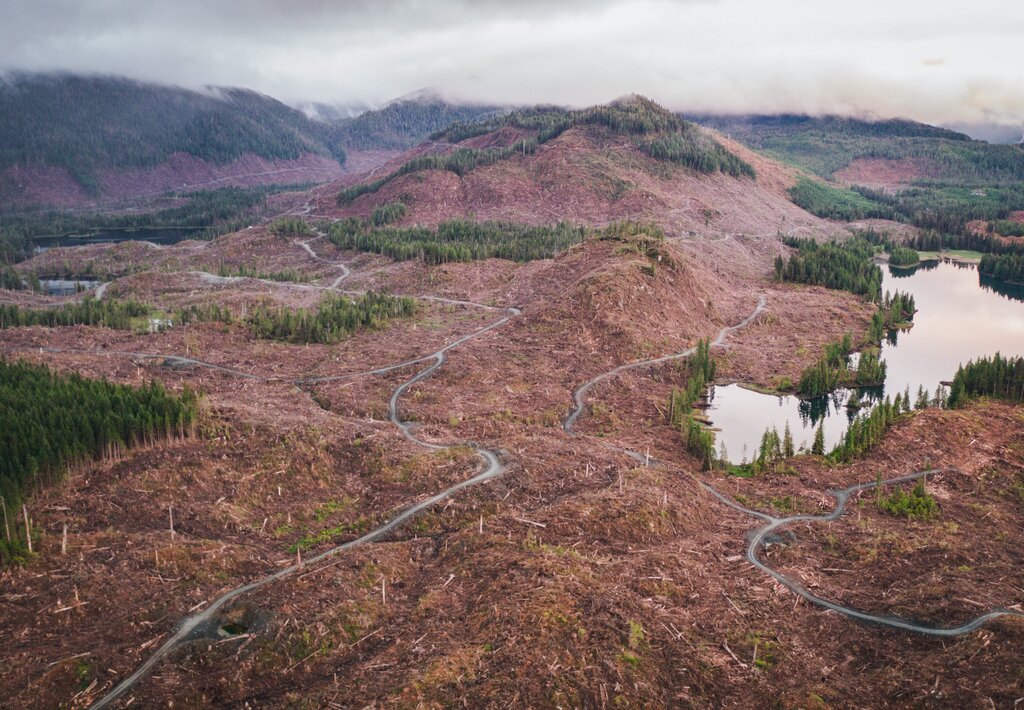
Recreation, on the other hand, accounts for 16% of the jobs in the forest and contributes about one billion dollars to the economy. The commercial wild salmon harvest in the Tongass provides 10% of the local jobs and contributes between one and two billion dollars to the economy. Salmon are a critical component of the ecological health of the forest. Wildlife like eagles, bears and wolves rely on salmon for much of their diet. Rather than consuming them on the river, they prefer to take their catch into the forest and feed on it in seclusion, where they don’t have to fight to keep it. The remains contribute essential nutrients, such as nitrogen, to the trees. Just as salmon contribute to forest health, they require a healthy forest to remain productive.
Our country has been in the business of forest ecosystem destruction for centuries. Although lumber is an excellent building material, builders in the U.S. commonly overbuild because it’s more profitable, creating large houses that are too expensive for most Americans. Although millions want affordable housing, it’s not being built and hasn’t been for decades. Potential buyers are left with no option but to rent. Thus rentals are in great demand, resulting in escalating rents and more and more families and singles with full time jobs that are going homeless.
In the urban/wildland interface, the irony is that homes built of wood are the norm and wood is highly flammable – and add to the CO2 in the atmosphere when they go up in smoke. But wood is not the only building material: straw-bales, which are tightly compressed, are very fire resistant, as are cob and adobe, which have been around for centuries, even millennia. What’s more, they can be cheaper to build and have superior insulation value compared to wood construction.
Our forests are our first line of defense against global warming. Our children and grandchildren will look back and see the habitual exploitation of our forests as a crime against nature and humanity. Rather than continuing to clearcut, it’s critical that we establish science-based ecological forest management protocols, to protect and restore these vital forest ecosystems today.
Note: You can find more of Joshua Smith’s writing here and email him at: editor@mudcitypress.com
